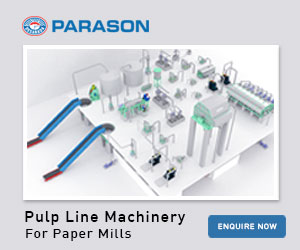The art of writing was originated in India by famous saint named “Ved Vyasa”.
Ved Vyasa used to write on tree leaves which were called “Bhoj Patra” (Betula utilis) with the help of peacock feathers. He used the extracts of fruits and other colorful ingredients as ink.
This idea of writing on leaves with feathers was innovated and transformed into writing on papers with pens.
The technology of papermaking was discovered in China by a person named Cai Lun. Cai Lun derived a bark out of a mulberry tree and transformed it into a paper-like structure by mixing it with some textile fibers.
Later the fibers were extracted from the Papyrus plant which led to the name ‘Paper’.
In India, traditional paper making procedures are practiced on a large scale. Making a few minor changes in the manufacturing process can help you to produce a better and efficient quality paper.
In this blog, we are going to tell you some advanced paper making tips that will enhance the tone and style of your paper product effectively.
So let us get started.
Maintaining the pH level of your paper
The quality of your paper highly depends on the pH level. Maintaining the pH level is very necessary to produce a long-lasting and solid paper product.
The pH level is the acidity, alkalinity, and neutrality of your paper.
What is pH? You know that water is formed by 2 atoms of hydrogen and one atom of oxygen making it H2O or HOH. The 1 atom H is acidic and the OH is negative. The amounts of Hs and OHs in the solution of your paper making decides the acidity, alkalinity, or the neutrality of your paper. The level of pH ranges from 1 to 14 among which 1 to 7 counts as acidic and 8 to 14 counts as alkaline. 7 is neutral.
pH SCALE
1 – 2 – 3 – 4 – 5 – 6 – 7 – 8 – 9 – 10 – 11 – 12 – 14
<< acidic << neutral >> alkaline >>
The average pH level of your paper should be 6.5 or higher. More acidic papers are likely to get destroyed and broke easily.
Using a variety of fibers in papermaking
Cotton is a great alternative as its fibers come in a comparatively larger length.
Did you know that the papers that are 100% made of cotton fibers are the strongest?
Cotton rags plus wood produces the best kind of paper, however, the manufacturing costs get multiplied by several times.
Have you heard of Kozo trees? These trees are also called as mulberry trees and are found mostly in North America. The fibers derived from the Kozo trees are long and possess higher strength to produce the best quality of the papers.
Mitsumata fibers can produce the smoothest, beautiful, and finely finished papers. Gampi is a plant that produces very smooth, shiny paper, and provides a royal feel to the paper.
According to Japanese, you can add flower petals and leaves from different types of grasses to the pulp to give different colors and textures to the paper.
Sorting of raw material into grades
Once the raw material is collected, you can sort it into grades of poor, good, and best. Use only the best part of the raw material to enhance the quality of your paper product.
The papers that are going to be manufactured for magazines, catalogs, business pamphlets, high-profile books, notebooks, covers, etc. can be manufactured with the best grade of raw material.
The poor and good grades of raw material can be used to manufacture regular paper products like newsprints, regular print papers, book papers, lightweight paperboards, etc.
Use extra chemicals to produce the desired paper
You all use all the chemicals that are necessary to produce paper.
Have you ever tried using little extra chemicals to give your paper the blend that it demands?
Here is a list of chemicals you might need in the next slot of your paper production.
➺ Optical brightening agent
➺ Retention agent
➺ Pigment, Sizing agent
➺ Dry strength additive
➺ Mineral Fillers
➺ Wet strength additive
➺ Bleaching chemicals
➺ Sulfurous acid for the Sulfite process
➺ Pulping chemicals
➺ Sequestering agents: EDTA, DTPA
➺ Coating binders
➺ Caustic soda, etc.
A paper can be recycled 7 times
Did you know that a paper can be recycled 7 times until it completely becomes non-recyclable?
That means that the paper industry can produce paper our of old and used papers 7 times. This will save you a fortune in terms of natural wood fibers and will help in saving a great number of trees.
Recycling papers is gaining huge attention instead of producing new papers out of trees. This initiative has saved the environment and helped in maintaining a greener world.
So these were some of the advanced paper making tips for your paper mill. We hope that we made it up to add to your learnings. Please leave us a comment if you like the article and don’t forget to share it with your friends and colleagues in the paper industry.
Thank you for reading.
Keep visiting 🙂




